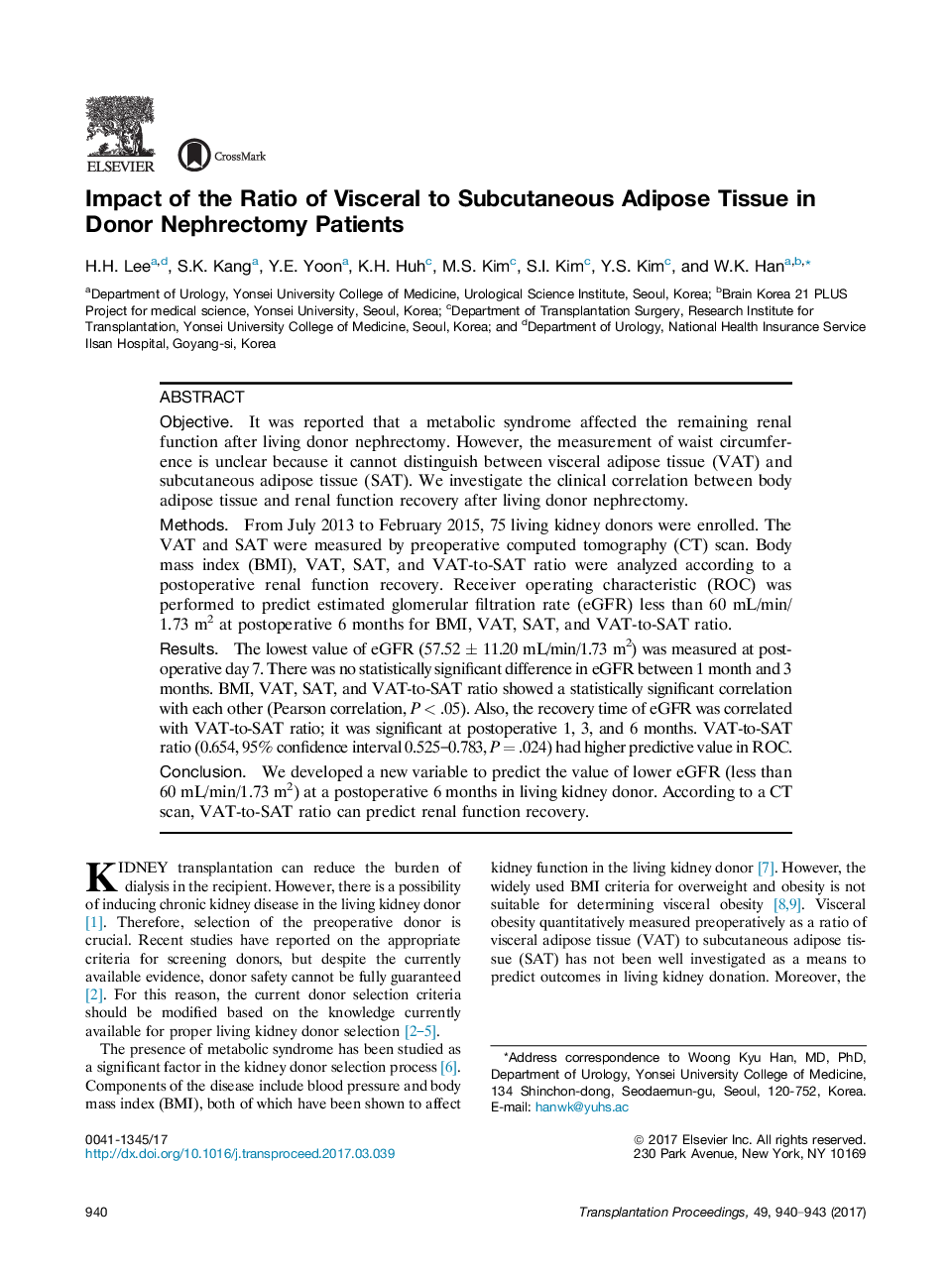| Article ID | Journal | Published Year | Pages | File Type |
|---|---|---|---|---|
| 5728774 | Transplantation Proceedings | 2017 | 4 Pages |
ObjectiveIt was reported that a metabolic syndrome affected the remaining renal function after living donor nephrectomy. However, the measurement of waist circumference is unclear because it cannot distinguish between visceral adipose tissue (VAT) and subcutaneous adipose tissue (SAT). We investigate the clinical correlation between body adipose tissue and renal function recovery after living donor nephrectomy.MethodsFrom July 2013 to February 2015, 75 living kidney donors were enrolled. The VAT and SAT were measured by preoperative computed tomography (CT) scan. Body mass index (BMI), VAT, SAT, and VAT-to-SAT ratio were analyzed according to a postoperative renal function recovery. Receiver operating characteristic (ROC) was performed to predict estimated glomerular filtration rate (eGFR) less than 60 mL/min/1.73 m2 at postoperative 6 months for BMI, VAT, SAT, and VAT-to-SAT ratio.ResultsThe lowest value of eGFR (57.52 ± 11.20 mL/min/1.73 m2) was measured at postoperative day 7. There was no statistically significant difference in eGFR between 1 month and 3 months. BMI, VAT, SAT, and VAT-to-SAT ratio showed a statistically significant correlation with each other (Pearson correlation, P < .05). Also, the recovery time of eGFR was correlated with VAT-to-SAT ratio; it was significant at postoperative 1, 3, and 6 months. VAT-to-SAT ratio (0.654, 95% confidence interval 0.525-0.783, P = .024) had higher predictive value in ROC.ConclusionWe developed a new variable to predict the value of lower eGFR (less than 60 mL/min/1.73 m2) at a postoperative 6 months in living kidney donor. According to a CT scan, VAT-to-SAT ratio can predict renal function recovery.
